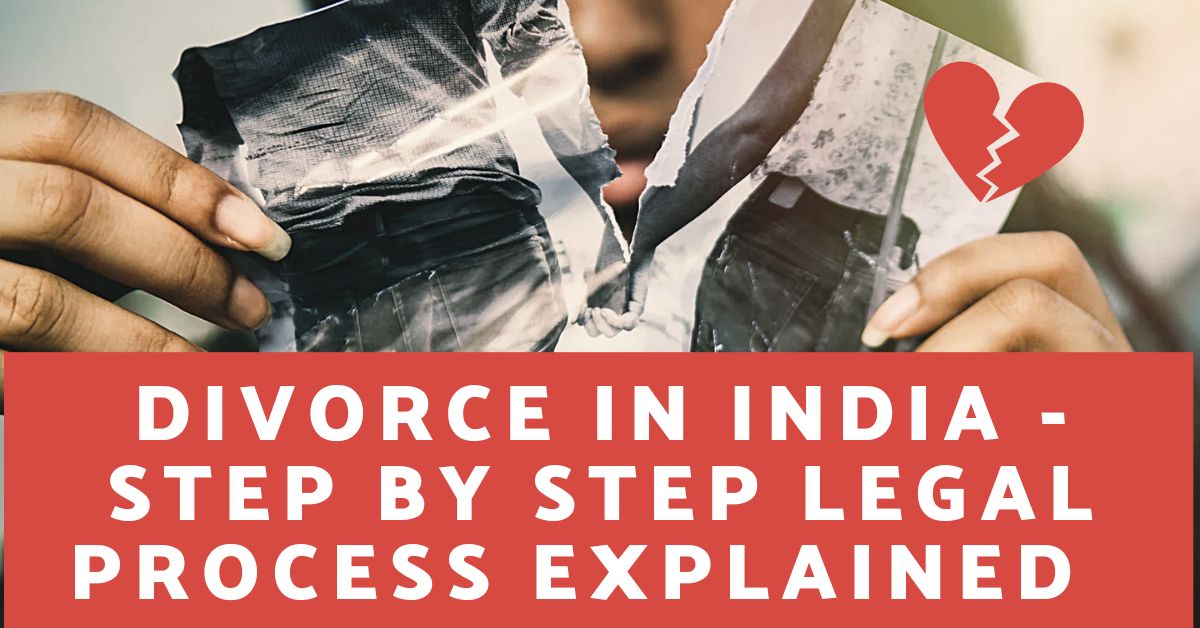This Article is written By Adv. NoorYaqoob Shaikh for awareness purpose solely.

Divorce is a major life decision that involves emotional, legal, and financial considerations. For individuals navigating a difficult marriage, understanding the legal path to ending that marriage is crucial. At NS Legal Associates, we believe that the first step to empowerment is knowledge. This article provides a comprehensive, step-by-step guide on how to file for divorce in India, aimed at individuals who are considering or have decided to initiate the divorce process.
Whether you are dealing with mutual consent or contested divorce, this guide will help you understand the procedure, required documentation, legal rights, and common pitfalls.
Types of Divorce in India
India’s divorce laws vary depending on religious background. However, the two broad types of divorce under most personal laws are:
- Mutual Consent Divorce: Both spouses agree to dissolve the marriage.
- Contested Divorce: One spouse initiates the divorce without the consent of the other, usually on specific legal grounds.
Legal Frameworks by Religion:
- Hindu Marriage Act, 1955 – For Hindus, Buddhists, Jains, Sikhs
- Muslim Personal Law (Shariat), 1937 – For Muslims
- Christian Divorce Act, 1869 – For Christians
- Parsi Marriage & Divorce Act, 1936 – For Parsis
- Special Marriage Act, 1954 – For interfaith or civil marriages
Step by Step Guide to File Divorce
Step 1: Consult a Family Lawyer
Before proceeding, it’s crucial to consult a family law advocate. A lawyer helps assess whether your case is fit for mutual or contested divorce and explains the implications for alimony, child custody, and asset division.
Example: Radhika (not real name), a Pune-based school teacher, approached
NS Legal Associates after years of an unhappy marriage. A consultation helped
her opt for mutual divorce, making the process quicker and less traumatic.
Step 2: Prepare Grounds for Divorce (Contested Divorce)
If mutual agreement is not possible, the spouse seeking divorce must file on one or more legally accepted grounds such as:
- Cruelty
- Adultery
- Desertion (minimum 2 years)
- Mental disorder
- Conversion to another religion
- Venereal disease or communicable disease
- Presumption of death (missing for 7+
years)
Note: For mutual consent, no grounds need to be proven.
Step 3: Filing the Divorce Petition
The petition must be filed in the family court having jurisdiction, typically where:
- The couple last resided together
- The wife currently resides
- The marriage took place
The petition includes:
- Basic facts of the marriage
- Grounds for divorce
- Details of children (if any)
- Claims for alimony/maintenance/custody
Step 4: First Motion (for Mutual Consent Divorce)
In a mutual divorce, both spouses appear in court and submit the first motion. After filing:
- The court records statements
- A 6-month cooling-off period is given
(waivable in special circumstances)
Latest Update: The Supreme Court (2023) held that the 6-month waiting period can
be waived in cases where separation is long-standing and no possibility of
reconciliation exists.
Step 5: Response from the Other Party (Contested Divorce)
In a contested divorce:
- The court issues a notice to the other party
- The other spouse has to file a written response/objection
- The matter then proceeds with evidence, witness examination, and arguments
Step 6: Mediation and Counseling
Family courts often encourage mediation or reconciliation, especially when children are involved. Courts may appoint counselors or legal aid to explore the possibility of saving the marriage.
Real Story: In one of our cases, a couple reconciled during court-recommended
counseling after understanding the emotional impact on their teenage daughter.
The process prioritizes family well-being.
Step 7: Second Motion (Mutual Consent Divorce)
After the cooling-off period, both parties appear again and reaffirm their consent. If satisfied, the court grants the decree of divorce.
Step 8: Final Hearing and Decree
In contested divorces, after full trial proceedings:
- The judge considers all evidence
- A final judgment is passed
- If granted, a divorce decree is issued
Tip: Always collect the certified copy of the decree for legal records and remarriage documentation.
Documents Required
- Address proof of both spouses
- Marriage certificate
- Photographs from the marriage
- Proof of residence/separation
- Financial disclosures (for
maintenance/alimony)
Children’s birth certificates (if custody is involved)
Frequently Asked Questions
Q. Can I file for divorce without my spouse’s consent?
Yes, through a contested divorce route.
Q. Is court appearance necessary?
Yes, for both mutual and contested divorces.
Q. How long does a divorce take in India?
Mutual divorce: ~6 to 12 months. Contested divorce: 2 to 5 years depending on
complexity.
Q. What if my spouse is missing or abroad?
You may file under “desertion” or use legal notice/public notice
procedures.
Conclusion
Filing for divorce is a challenging yet sometimes necessary step toward rebuilding your life. Knowing your legal rights and the procedure can reduce emotional and legal stress. At NS Legal Associates, we assist individuals in navigating their divorce journey with
empathy, confidentiality, and strong legal backing.
If you are unsure where to begin or feel overwhelmed, book a consultation with our expert family lawyers today. You are not alone — we’re here to help you move forward.
